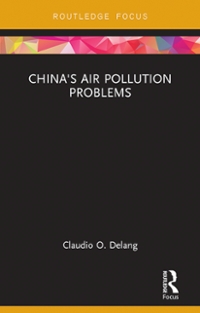Solvethefollowingquestionscorrectly:
Questions.
Problem 1. Consider two mutually exclusive risky investments, 1 and 2, with payoffs given by: $1 with probability 20% W1,s = $3 with probability 50% and W2,s $2 with probability 60% $5 with probability 30% $4 with probability 40% Suppose that Sophia's initial wealth Wo = $0, and her utility U(W) = W.5. A. Calculate Sophia's expected utility (E(U(W)) for both investments. B. Now suppose that Liam also has initial wealth Wo = $0, but his utility function is U(W) = In(1 + W). Calculate Liam's expected utility (E(U(W)) for both investments. C. Does either investment first order stochastically dominate the other? Explain why or why not. D. Compare these investments once again. Is there second order stochastic dominance? Explain why or why not. E. Which investment should Sophia choose? Explain why. F. Which investment should Liam choose? Explain why.6. Which of the following statements about the relationship between perfect com- petition and efficiency is NOT correct? (a) In the short run, and assuming no other externalities, a perfectly com- petitive industry achieves allocation efficiency: that is, it produces the quantity which maximizes short-run gains from trade. (b) In the long run, and assuming no other externalities, a perfectly com- petitive industry with free entry achieves productive efficiency: that is, output is produced at minimum average cost. (c) In the long run, a perfectly competitive industry achieves dynamic effi- ciency: that is, its members invest in developing new products and im- proving productive technologies at socially optimal rates. (d) All three statements above are correct.7. The Harberger triangle is defined as the area between the demand and supply curves, for quantities between the quantity actually produced and the compet- itive quantity. What does this triangle measure? (a) Producer surplus: variable profit earned by firms in the market. (b) Total surplus: the amount by which consumers' willingness to pay exceeds firms' marginal costs of production. (c) Deadweight loss: the reduction in total surplus induced by market power. (d) The Lerner index: a measure of market power, defined as the ratio between a firm's markup over marginal cost and its price. 8. Suppose that an industry shifts from perfect competition to monopoly conduct (for instance, through collusion, as with the alleged Teva cartel). Which of the following statements about the likely consequences of this change is correct? (a) Price will increase and quantity sold will decrease. (b) Producer surplus will increase, while consumer surplus will decrease. (c) Total surplus will decrease. (d) All of the above are correct. 9. Consider two price-setting firms, Firm A and Firm B. At each firm's optimal price, it is estimated that Firm A faces a price elasticity of demand given by EA = -2, while Firm B faces a price elasticity of demand given by es = -3. Which of the following statements is correct? (a) Firm A has a higher price-cost margin than Firm B. (b) Firm B has a higher price-cost margin than Firm A. (c) Firm A has a lower marginal cost than Firm B. (d) More information is needed to answer the question.10. Which of the following statements about US antitrust policy, as enforced by the Department of Justice, is correct? (a) Any merger which increases market concentration is illegal. (b) Any exercise of market power is illegal. (c) Any conspiracy by firms in restraint of trade is illegal. (d) All of the statements above are correct.5. Consider an investor who must decide how much of her initial wealth w to put into a risky asset. The risky asset can have any of positive or negative rates of return ri with probability pi , i = 1, ... . n. If B is the amount of wealth to be put into the risky asset, final wealth under outcome i will be (w - B) + (1 + ri )B =w+ Bri. The investor's problem is to choose S to maximize the expected utility of wealth. (a) Write down the investor's maximization problem. (b) Determine under what conditions a risk-averse investor will decide to put no wealth into the risky asset. (c) What happens to the amount of wealth devoted to the risky asset as wealth increase











